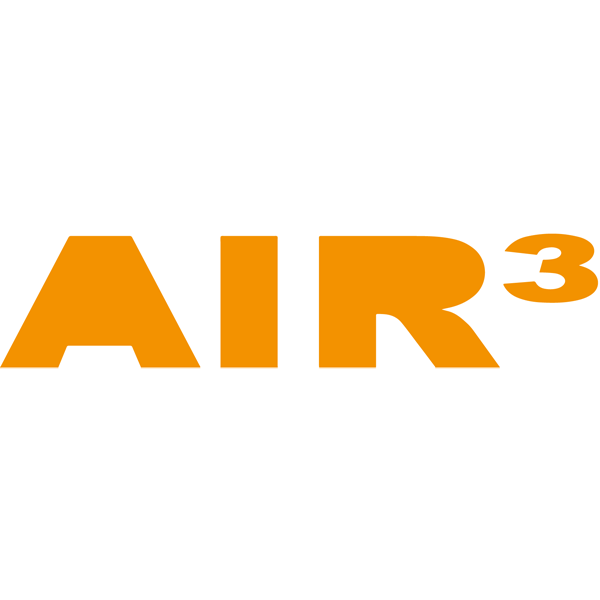The level of brightness has a direct influence on both readability and energy consumption and therefore autonomy. If the brightness is set to its maximum, the energy consumption will be maximum and the autonomy minimum.
Check this FAQ related to readability.
Check this FAQ related to autonomy.
Most smartphones or tablets have a low screen brightness. This means that pilots set the brightness to maximum without really having good readability. So pilots are used to setting the brightness to maximum, regardless of the readability.
With AIR³ you have to look at things differently. The maximum screen brightness can be very high, higher than what is really needed. Those who can do the most can do the least… but the opposite is not true.
First of all, remember that the best readability is when your eyes are perpendicular to the screen. So most of the time you do not need maximum brightness.
Using maximum brightness all the time is like driving a powerful car at full throttle and using the handbrake to slow down most of the time.
With XCTrack Pro, there are 2 ways to manually increase brightness when needed: use the on-screen Brightness + widget or use one of the available physical buttons.
AIR³ has been greatly improved in terms of brightness management to improve readability and therefore autonomy. See below for more details.
As soon as the pilot increases the brightness manually (via the widget or a physical button), the brightness level is “overridden” by XCTrack. This overridden brightness value will be maintained until XCTrack returns the backlighting to normal intensity. XCTrack Pro has a new Brightness widget that displays the current percentage of brightness. If XCTrack overrides the system brightness, (!) is displayed next to the value. If XCTrack cannot determine the brightness value, (?) is displayed.
XCTrack Pro, as shipped with AIR³, has been configured to periodically return to the system brightness level through various events, setting the backlight to normal intensity.
AIR³ has an interesting feature: “Adaptive Brightness. By activating this Android feature, the system calculates the ideal brightness based on the lighting conditions. In a bright environment, the system increases the brightness level. In a darker environment, the system reduces the brightness level.
So whenever XCTrack Pro sets the backlighting to normal intensity, the brightness level is calculated by the system and modified, usually reduced, compared to a setting with maximum brightness.
Without adaptive brightness, we recommend setting the brightness to 60%. Whenever you feel the need to increase readability, tap the Brightness + widget. The brightness will return to the value you set at startup after one of the events has occurred.
In AIR³ with adaptive brightness enabled (default), the system calculates the best brightness value. You can increase the brightness at any time using the button or the Brightness + widget. Once XCTrack sets the backlight to normal intensity, the new value is determined by the system based on the lighting conditions.
It may take a short while to change the screen brightness once the light intensity on the screen changes. However, when the pilot starts to turn in a thermal, the sun’s light intensity will quickly change. This is why we recommend setting XCTrack to force the screen intensity to 80% (AIR³ 7.35) or 100% (AIR³ 7.3) when XCTrack detects a thermal start. When the end of the thermal is detected, set XCTrack to return to normal intensity. These settings will increase autonomy while maintaining the best readability according to need.
AIR³ 7.35 (+) has a very bright screen (up to 2200 nits). The higher the brightness, the more heat is generated by the screen itself. If you expose the unit to direct sunlight before take-off, the screen may start to flash if you have set the screen brightness to a very high level. It is strongly recommended that the unit is kept in the shade before take-off. We also recommend that you set the screen brightness to less than 90% to avoid overheating. As long as the brightness rarely reaches this level with Adaptive Brightness enabled, you should rarely find yourself in this situation.
